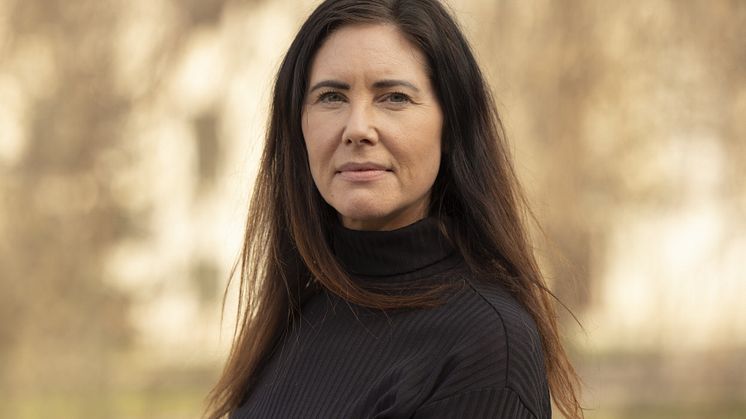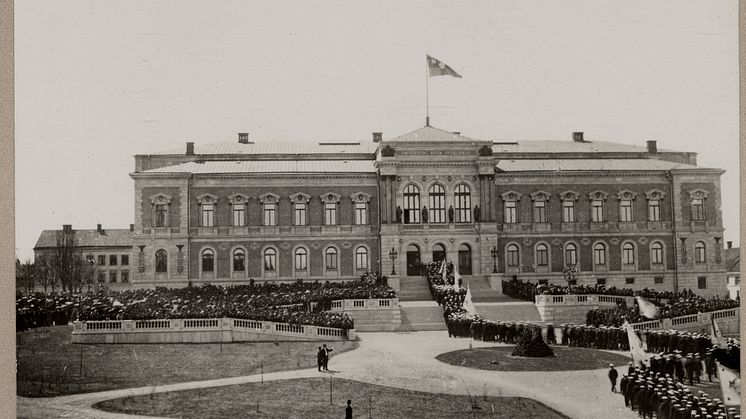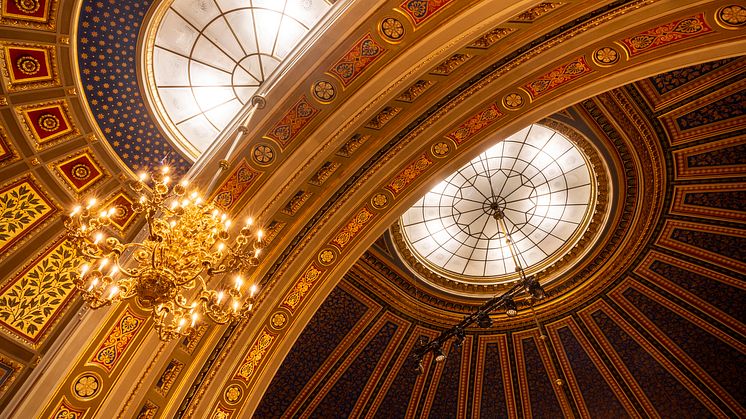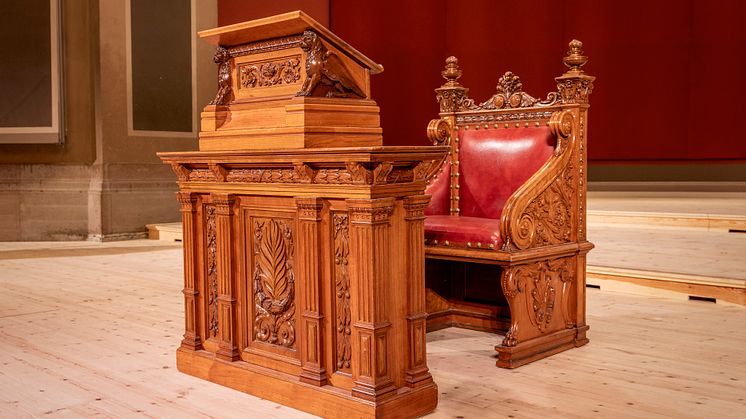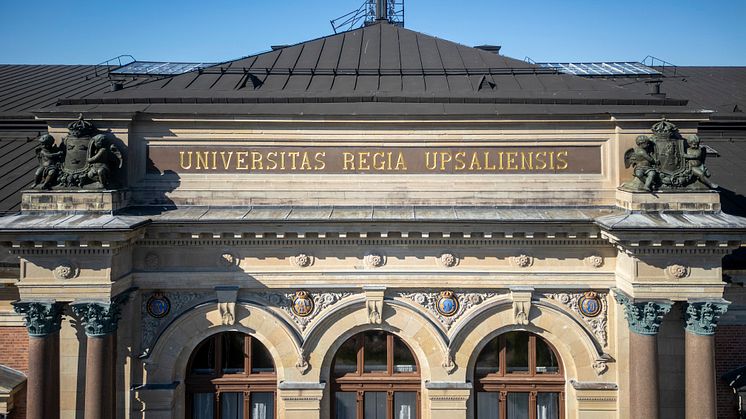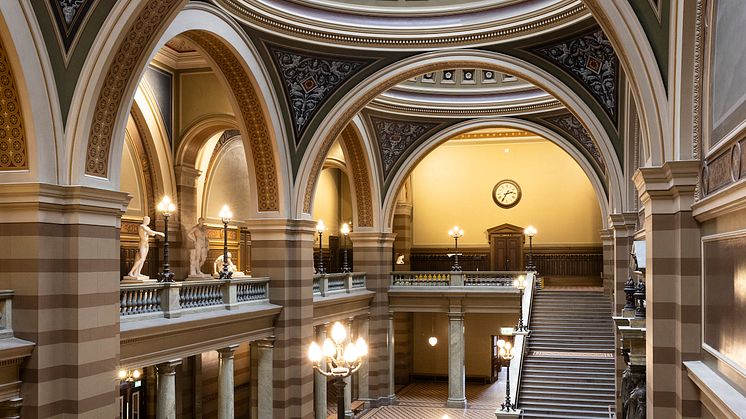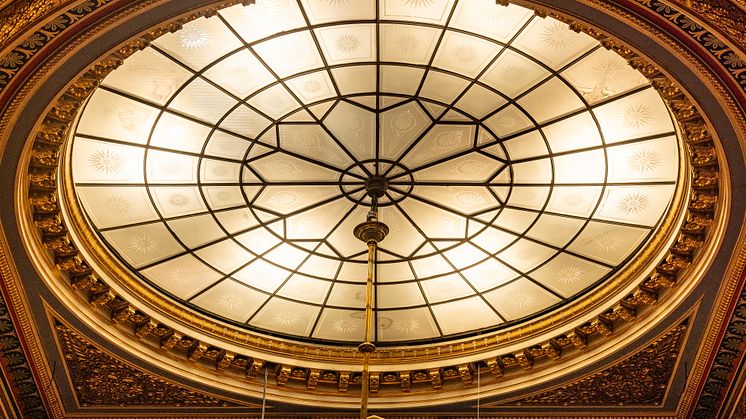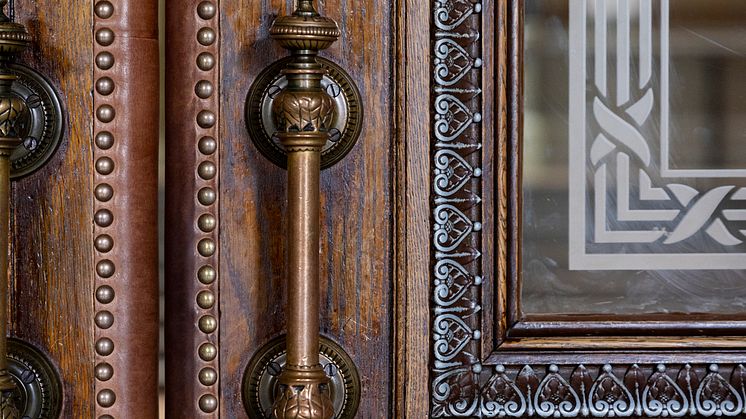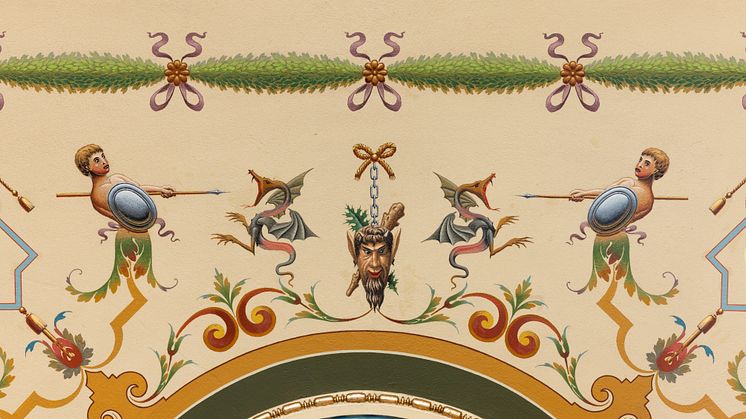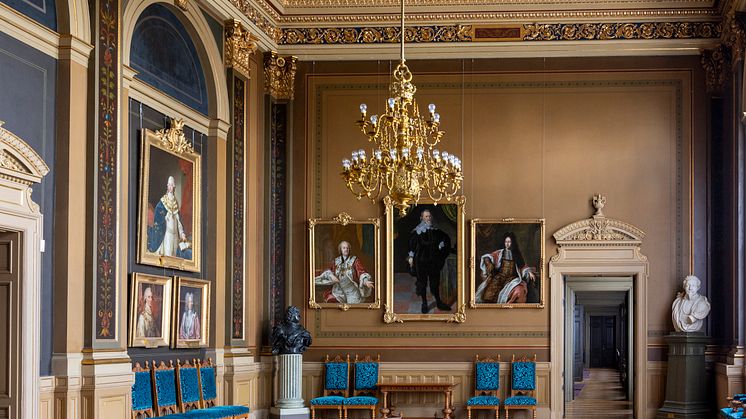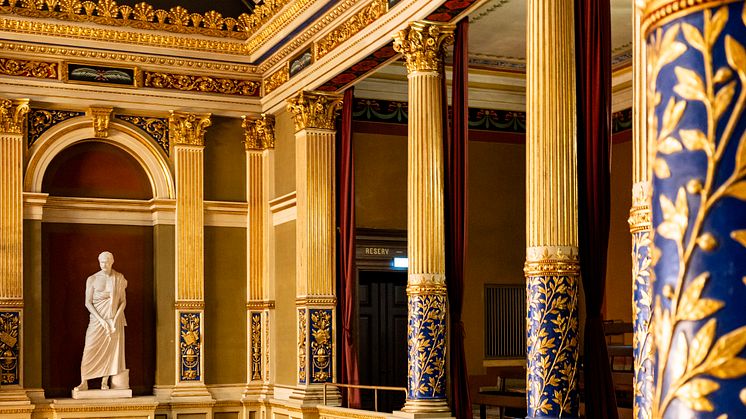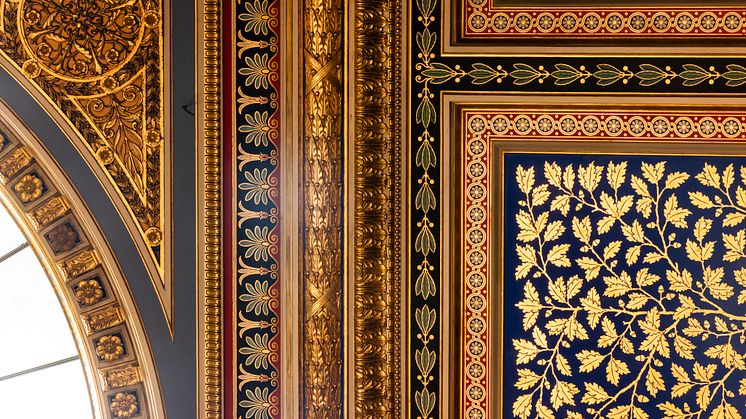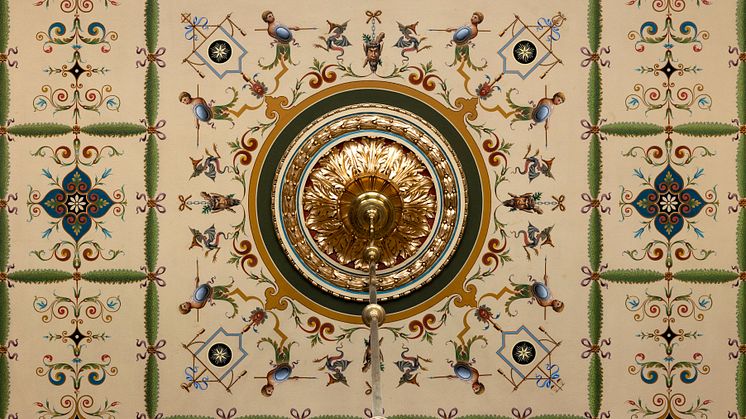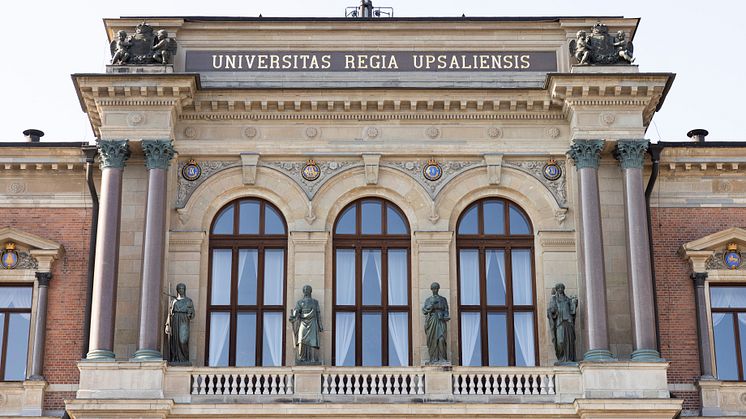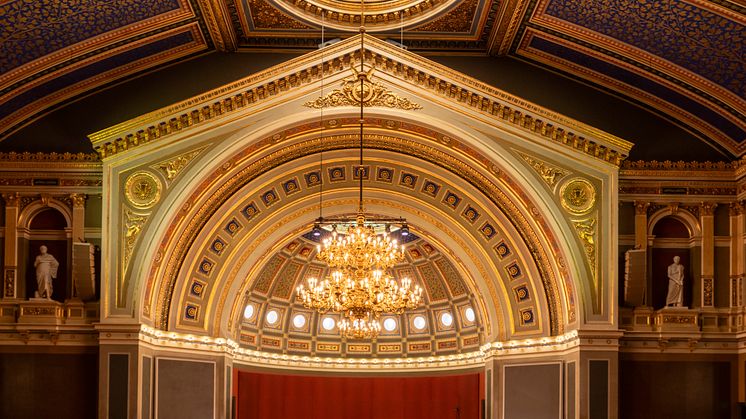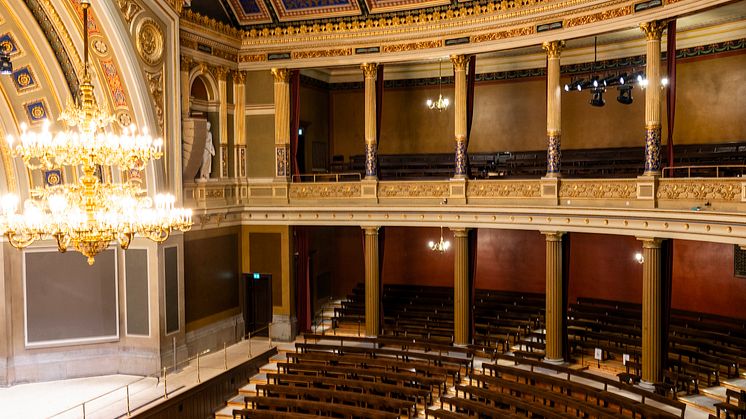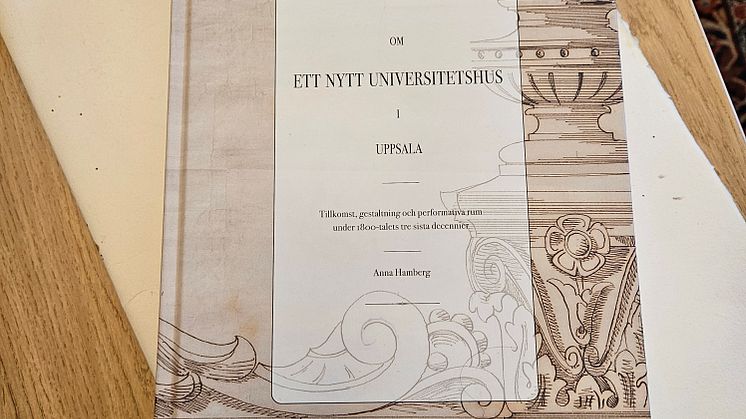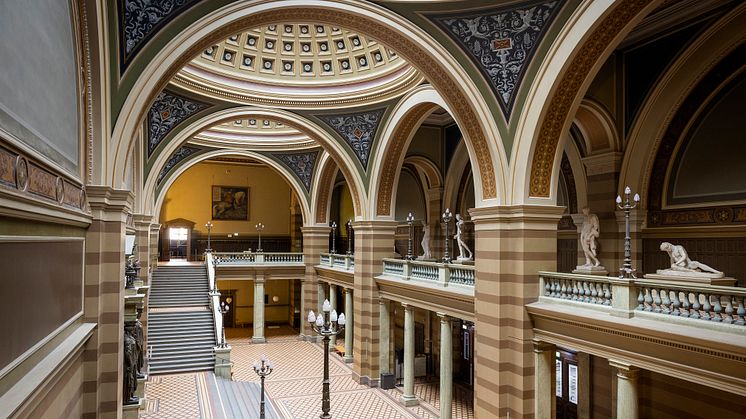
Press release -
"A unique position in Swedish architecture"
Uppsala University’s Main Building is one of the few well-preserved intact milieus from the 1880s and has a unique position in Swedish architecture. This applies to both the façade and the entire interior, where the colour scheme, decoration, artworks and furniture have largely remained exactly as they were when the building was inaugurated. This is shown in a new thesis on the University Main Building in Uppsala, in which curator Anna Hamberg explores and presents everything associated with the building.
“It’s exciting to see the way everything was conceived to begin with, and how much didn’t turn out as originally planned. One example is the monumental mural that was planned for the wall above the entrance to the auditorium. It was intended to show scenes from the University’s history, but there it is today, completely bare,” says Anna Hamberg, who recently defended her thesis on the University Main Building in Uppsala.
The University Main Building in Uppsala was inaugurated on 17 May 1887. In a new thesis, Hamberg, a curator at the University’s Gustavianum museum, has studied the architecture and design of the building. What did the plans for the University Main Building look like? What were the prevailing ideals at the time of its construction? When the edifice was completed, it differed in many ways from the architect’s original intentions. How did this happen?
The light of knowledge a clear theme
To understand why the building was designed and decorated in the way it was, Hamberg traces its inspiration back to antiquity.
“The quest for the light of knowledge is the overarching symbolic theme of the building – the decorative painting of the dragon in the large chancellor’s room is a clear example. In the centre we see a dragon and a faun. They symbolise ignorance being driven off by a youth with a spear. What the youth is protecting is the light of knowledge in the form of a star on a standard. The University also has a large collection of plaster casts of ancient originals. Today we can see parts of the collection upstairs in the grand hall,” says Hamberg.
“To think freely is great, but to think rightly is greater”
The façade is familiar to many, with its four allegorical female figures symbolising the four faculties that existed when the building was new: theology, law, medicine and philosophy. The interior is perhaps best known for the famous quote by the 18th century lawyer Thomas Thorild: “To think freely is great, but to think rightly is greater”.
“This can also be interpreted as a call to the viewer to seek the light of knowledge.”
The entire stair hall is dominated by a floor of English-made tiles, which together with the height of the ceiling and the domes create a special space. In her thesis, Hamberg describes how, at the time of construction, new technical solutions were emerging that helped make it possible to create this type of fascinating milieu.
Furnitures specially designed by architect
One piece of furniture she singles out in particular is one of the lecterns in the auditorium, which is still used as a ceremonial piece of furniture once a year at the inauguration of professors. Like many of the other pieces of furniture in the building, it was specially designed by the building’s architect Herman Teodor Holmgren. During his three-year study tour of Europe, he stayed in Paris where he spent much of his time in the great Louvre Museum. Then, as now, the marble ‘Throne of Ceres’, brought there as a spoil of war by the French Emperor Napoleon (1769-1821), was on display there. It can be assumed that Holmgren used the throne in the Louvre as a model, as the similarities with his furniture designs for the University Main Building are striking.
In her thesis, Hamberg describes how the architect embedded the academic hierarchy in the building’s design. The rooms differed in their placement and degree of decoration, depending on whether they were for students or professors. The lecture halls were kept spartan, with no decoration or art on the walls, while rooms intended for professors or the vice-chancellor were more lavishly fitted out.
Unique architectural drawings better preserved
One important and tangible result of the thesis has been that fragile and unique architectural drawings held in the University’s archives have been conserved and better preserved for posterity. They have also been published on the Alvin digital platform, making them available to the public and for further research. Some of this material is on temporary display at the Carolina Rediviva University Library.
“Uppsala University Main Building has a continuity value that is rare in Sweden and well worth preserving. It is also inspiring that the building is still used for its original purpose –everyday academic life, ceremonies and celebrations,” Hamberg concludes.
Doctoral thesis: Hamberg A. (2025). Om ett nytt universitetshus i Uppsala. Tillkomst, gestaltning och performativa rum under 1800-talets tre sista decennier (On a New University Main Building in Uppsala – Process, Design and Performative Spaces in the Last Decades of the 19th Century), Uppsala: Acta Universitatis Upsaliensis, 2025, Ars Suetica: skrifter, ISSN 0066-7919 ; 27, ISBN: 978-91-513-2389-3 (printed)
For further information:
Anna Hamberg, Doctor of Art History, Curator at Gustavianum Uppsala University Museum, Sweden,
e-mail: anna.hamberg@uu.se, phone: +46-70-425 03 35
Related links
Topics
Categories
Founded in 1477, Uppsala University is the oldest university in Sweden. With more than 50,000 students and 7,500 employees in Uppsala and Visby, we are a broad university with research in social sciences, humanities, technology, natural sciences, medicine and pharmacology. Our mission is to conduct education and research of the highest quality and relevance to society on a long-term basis. Uppsala University is regularly ranked among the world’s top universities. www.uu.se

